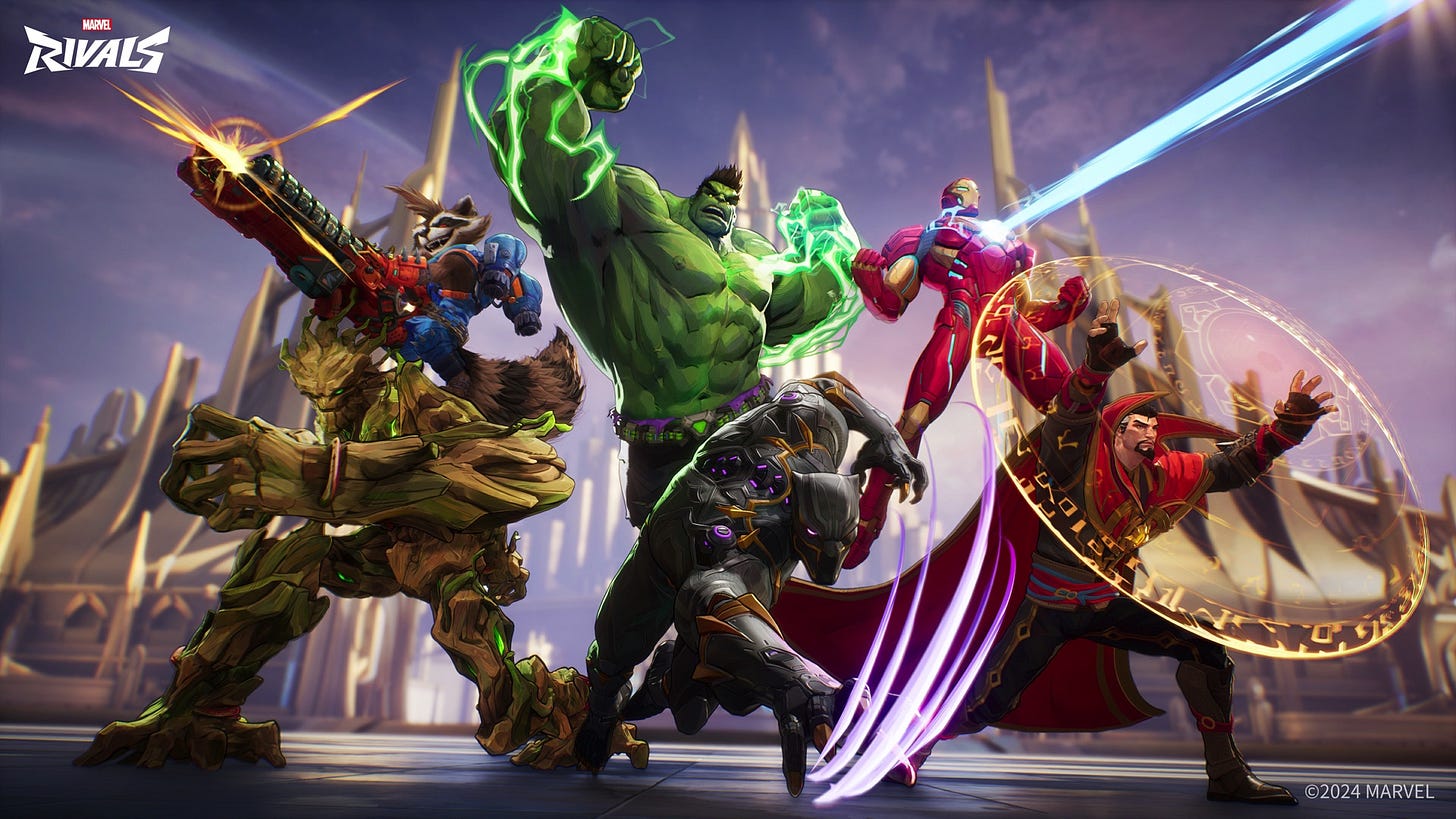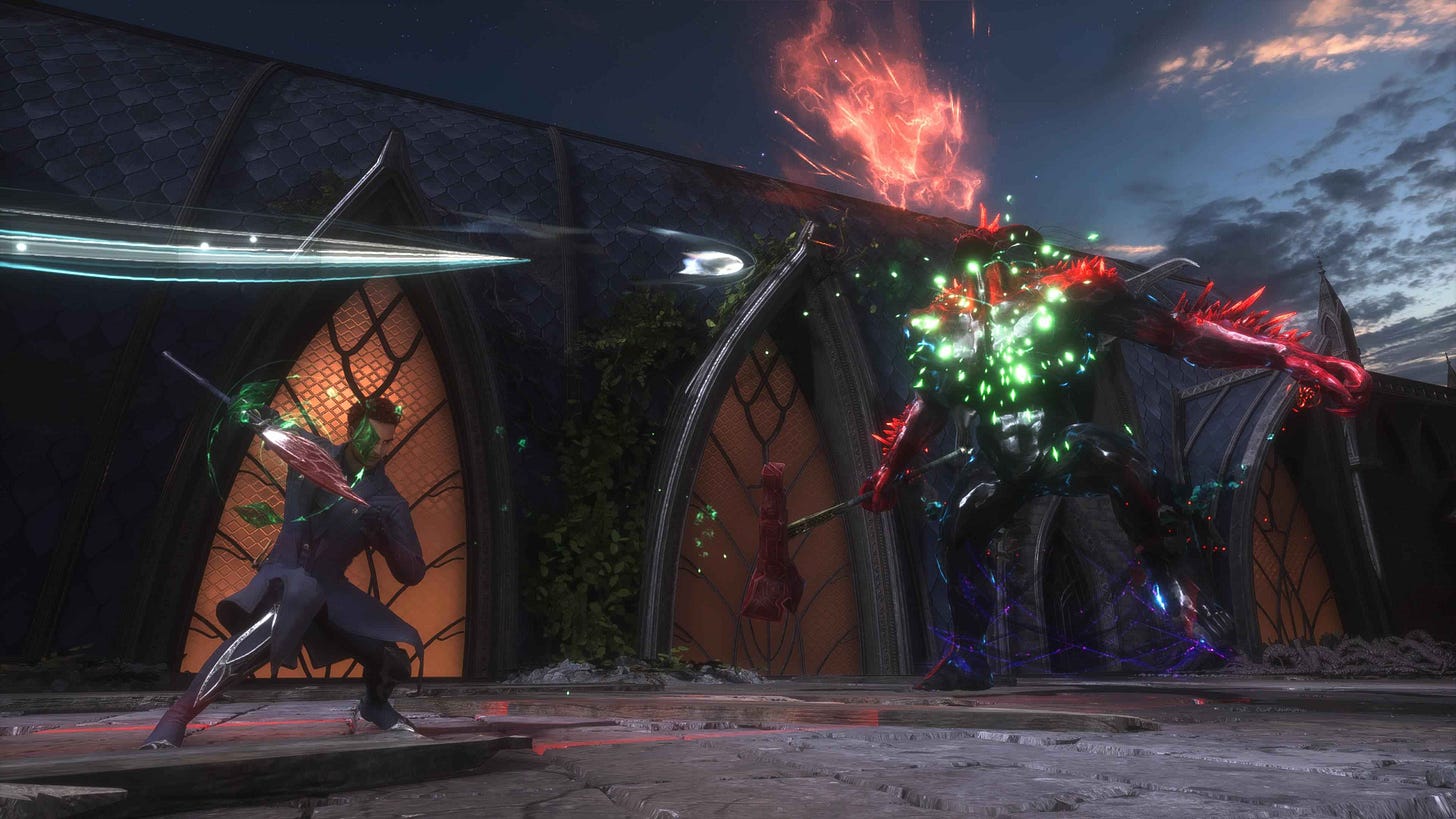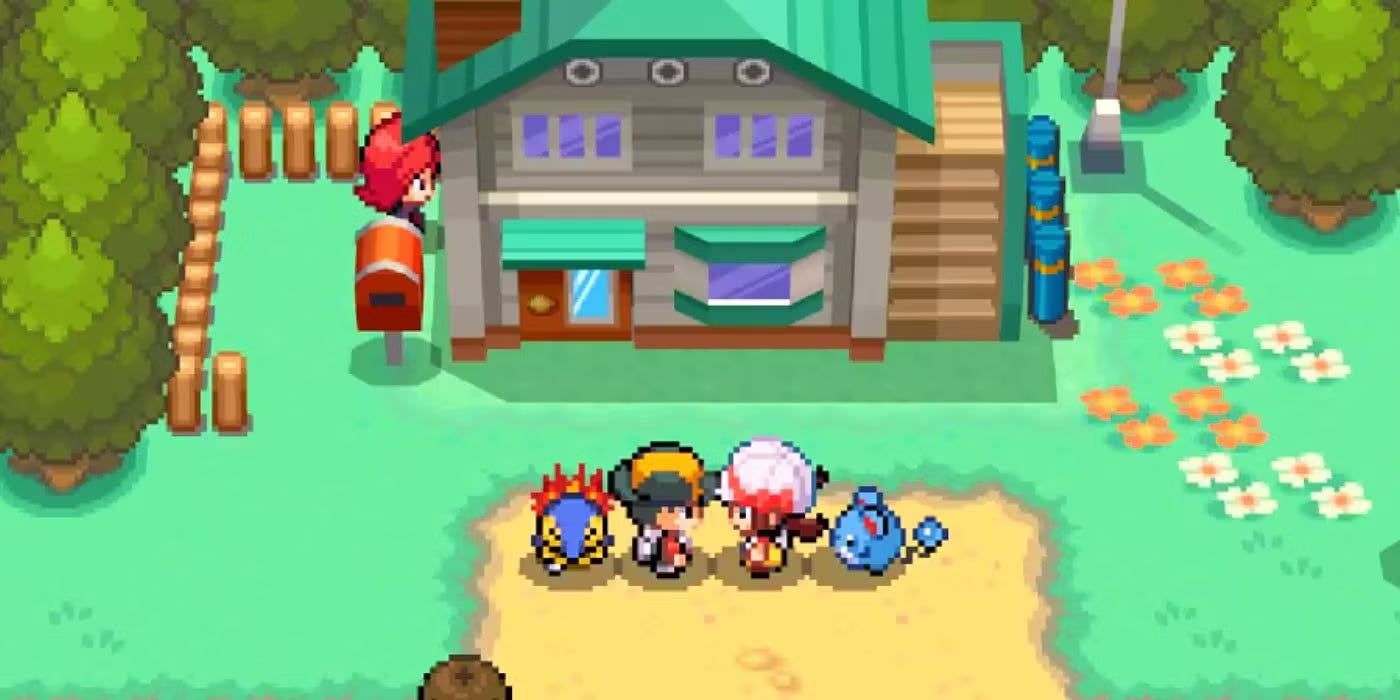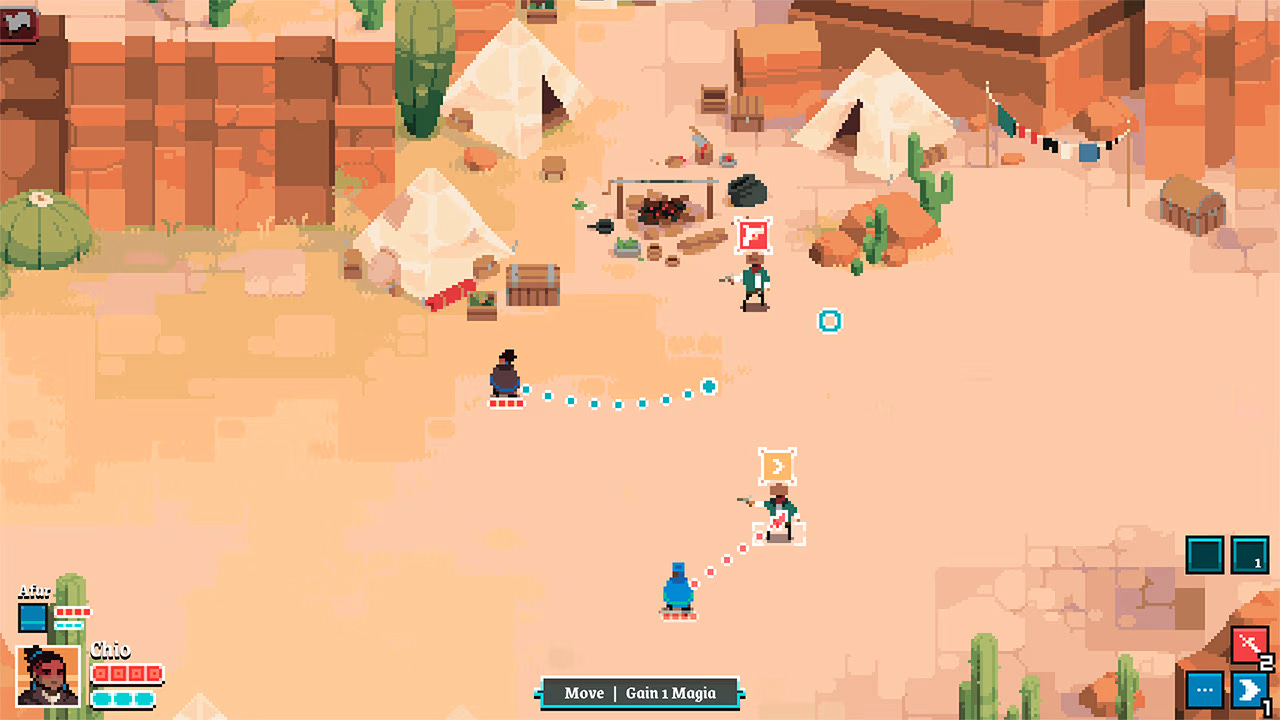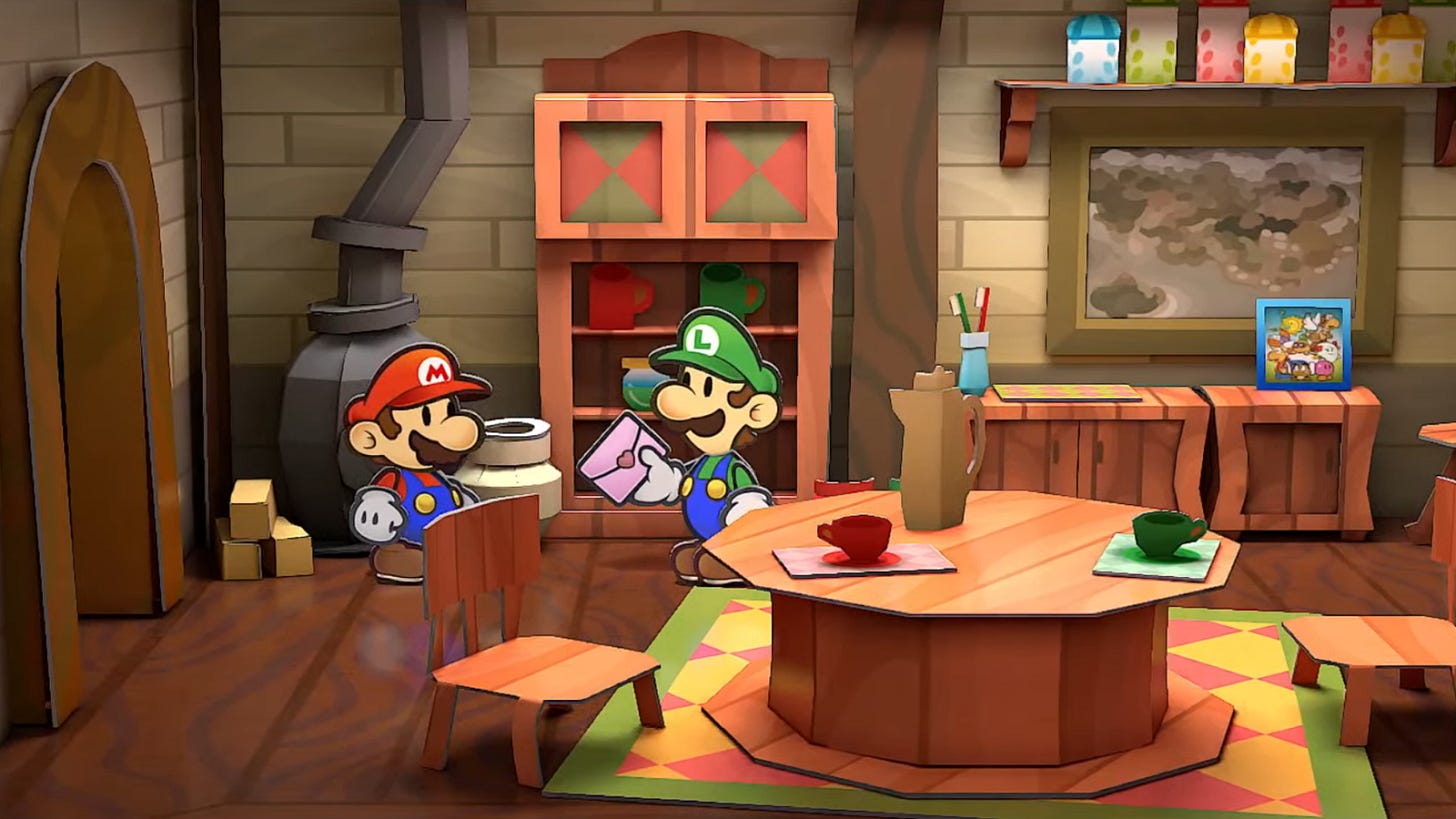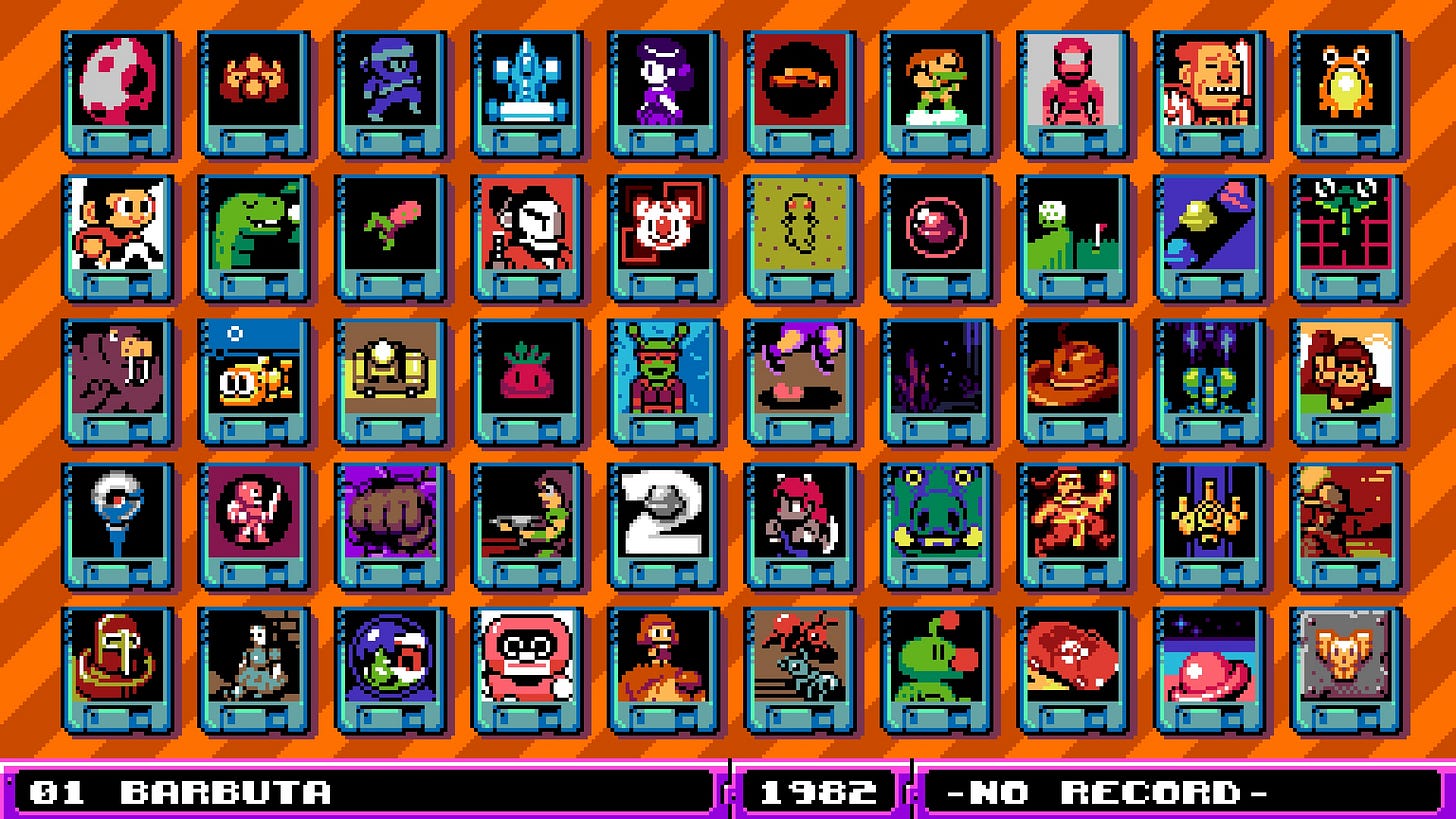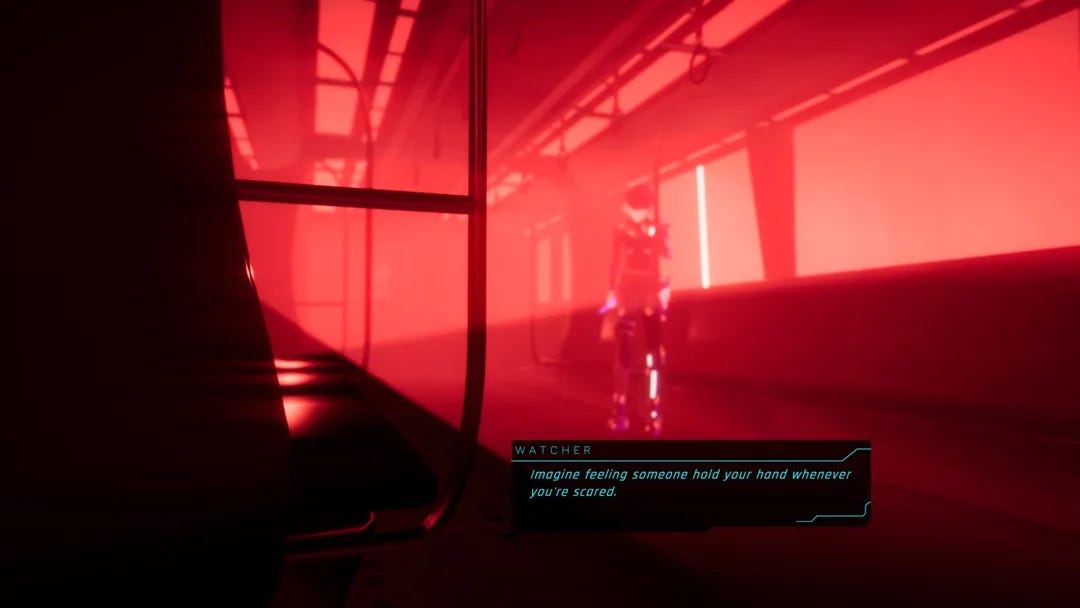You have already read 14 other lists just like this one.
You are probably here for the games, not my musings on the year 2024 (a good and stupid year).
So let’s skip the preamble and get right to it. Here are ten games I loved in 2024.
10. Pokémon TCG Pocket
I cherish the time I spend with my wife, Sarah, before we both start work for the day.
Our sacred morning ritual: coffee, Wordle, and—our newest indulgence—Pokémon TCG Pocket. It’s a quiet, unhurried time, the kind that seems to slip through your fingers if you aren’t careful, but this year especially I have come to appreciate how much of this time makes up my Real Life.
While I sometimes like to fancy myself an artistic authority on video games, waxing poetic about their artistic merit from the comfort of a well-worn leather chair, the truth is, I’m just as attached to how they can fit themselves into my life. Not every game invites someone from my Real Life to glimpse into video games, and not every game needs to demand more than a fleeting moment of my day.
The magic of TCG Pocket, I think, lies in its crescendos. Days of opening bad packs, settling for duds and filler cards, all building to the glorious, improbable pull of a Celebi EX, the final piece my grass deck had been waiting for. The randomness of it all, the capriciousness of luck—it’s maddening, and it’s perfect. Would it be better if every pack held exactly the cards we wanted? Of course not. The thrill would vanish, replaced by something sterile and transactional. The joy is in the shared surprises: the cards my friends pull, the way Sarah steps into my office, card in hand, her face lit up with curiosity as she asks if the shiny thing she just found is even any good.
There’s something about TCG Pocket—the gentle rhythm of its daily pulls, the quiet excitement it stirs—that has me looking forward to each update, not for the new cards or mechanics, but for the conversations they’ll spark at our little breakfast nook, where life feels, for a moment, perfectly whole.
I invite you to read what Sarah wrote about TCG Pocket, here.
9. Marvel Rivals
People who play a lot of video games usually want one thing: to enjoy every single second they’re playing. This is why competitive genres like MOBAs or fighting games tend to push away a lot of big game players. Losing sucks. Getting yelled at by a 12-year-old whose gamertag is some variation of “xXx_K1llSh0t420_xXx” sucks more.
And for game reviewers? Reviewing a competitive online game is like trying to review a single NBA game. You can break down the plays, the shots made and missed, the rhythm of the thing—but can you capture the restless electricity of being a fan? The way one game bleeds into the next, each carrying the weight of what came before, the arguments on forums and in the stands, the slow evolution of a team into something greater than its stats?
Where in a review for a video game can you make space for The Drama. The Trash Talk. The guy who keeps yelling “GG EZ” in chat after losing. The evolving meta where one day your favorite character is God-tier, and the next they’re about as useful as a wet paper bag.
Which brings us to Marvel Rivals. At a glance, it’s the Spider-Man pointing meme but with Overwatch. Gamers hate copycats, so they’ll jump in, play three rounds, and immediately head to Twitter (please, go to bluesky, instead) to declare, “Where’s role queue?! Trash game!” It’s like Overwatch was supposed to be this sacred scroll they could copy notes from, and Marvel Rivals just showed up with a crayon.
But here’s the thing: yeah, Marvel Rivals might look like Overwatch on its way to Comic-Con, but what people are really mad about is that they lost. Badly. Because that’s the secret truth of competitive games: they’re like sports. You’re not playing for one perfect game—you’re playing for the chaos, the learning curve, and the chance to feel like a hero for two glorious minutes before getting bodied by someone half your age.
The beauty of any living, competitive game lies not just in its mechanics or fleeting moments of triumph but in its ceaseless, evolving dialogue. It’s a thing in motion. Success delivers a familiar rush of endorphins, but even the defeats—especially the defeats—carry their own kind of joy. There’s a camaraderie in losing, a warmth familiar to anyone who has ever complained about terrible refs, and instantly recognizable to those who have yelled at their internet connection.
These conversations—messy, impassioned, alive—aren’t an afterthought or an accessory to the game. They are the game itself. To review the game without acknowledging them is like reviewing a concert without mentioning the crowd. You’re missing the point.
It’s fun to be part of the Marvel Rivals conversation.
That said, I don’t want to give you the wrong impression. The game itself gets a lot of things right. The free-to-play monetization structure is, at least for now, nonintrusive. The third-person perspective makes the game more accessible, especially for players who usually avoid shooters due to the lack of visual feedback. Here, you can always see the hero you’re controlling, which adds a layer of connection and clarity.
There’s also a natural synergy between the hero-shooter genre and Marvel superheroes. The characters lend themselves to varied movesets and traversal styles, creating gameplay that feels dynamic and engaging. Plus, the instant recognition that comes with seeing a Marvel superhero is a huge advantage. Players can often intuit their abilities and combat roles without needing to pore over tutorials—a clear leg up over other games in the genre that can feel overwhelming to learn. When you’re working with one of the most prominent pop culture brands in the world, the game should be easier to pick up than its competitors—and thankfully, it is.
8. Super Mario Party Jamboree
Typically, when friends come over for a game night, my wife and I are happy to play board games like Ticket to Ride, Hues and Cues, or Monopoly Deal. But Mario Party is one of the rare video games deemed acceptable for normie consumption.
The problem with playing video games with non-gamer friends is, honestly, I’m just too good. The ease with which I can pick up a video game controller already gives me such an advantage that it’s hard for anyone else to bridge the gap. Mario Party has always been a bit of a salve. Navigating the game board, rolling dice, making strategic decisions, and the relative randomness inherent to the game make it far more accessible than games that demand technical mastery.
Mario Party works because it’s designed to be played with normal people. But I think Jamboree injects a couple of new elements into the formula that make it an especially fun party game compared to past entries.
First, Super Mario Party Jamboree brings back motion-controlled mini-games. Gaming purists will likely opt for a Pro Controller and avoid the motion-controlled games entirely, but there’s something quintessentially Mario Party about being forced to use a tiny Joy-Con and waving the little device around like a fork in soup. Motion controls close the gap between my typically overpowered gaming skills and everyone else’s—this is what I need at a party.
Second, the titular Jamboree Buddies. A couple of times per game, you can earn a buddy—a companion who grants massive advantages, like extra dice rolls or even the ability to buy two stars at once. In practice, this makes the typical pacing of any Mario Party game far more explosive.
Buddies make mid-game drama unavoidable. A single buddy can catapult you from last place to first—or sabotage your lead in ways that you will hold in your heart until long after the game is over. It’s chaotic, sure, but it’s meaningful chaos. The Jamboree Buddies give party-goers a point of contention and discussion beyond just who’s winning or losing overall. They create a natural talking point that’s perfect for a party setting.
In a vacuum, Mario Party Jamboree is little more than “more Mario Party.” But at an actual party, the game sings more beautifully than perhaps any other entry in the franchise.
7. Dragon Age: The Veilguard
Listen—shut up—I like Dragon Age.
I like how Dragon Age, unlike most other fantasy fiction I’ve encountered, puts its characters and their relationships front and center. The Veilguard doesn’t get lost in the weeds of sprawling worldbuilding or centuries of lore that demand a study guide. Instead, it keeps the focus tight, the stakes immediate. It’s a game about people and their choices, first and foremost.
So, the combat. On the sticks, The Veilguard delivers the franchise’s best battle system yet. I played as a mage, and the variety of up-close and ranged spells—each crackling with elemental flair—perfectly captured the fantasy of being a magic-wielding warrior. Every fight felt dramatic, operatic in its choreography. Sure, it’s not a flawless system, but it’s ideal for the kind of role-playing Dragon Age has always excelled at: sweeping, theatrical, and personal.
As for why I think the game, as a whole, appeals to me so easily: I’ve always been a sucker for melodrama—the moody, CW-esque, larger-than-life storytelling that doesn’t just flirt with soap opera tendencies but fully embraces them. It’s what Dragon Age does best, weaving grand narratives where everything matters, until it suddenly doesn’t.
I cruised through The Veilguard at a steady clip, fully engrossed. Meeting and recruiting new party members was a delight, as was testing my mettle against mini-bosses miles above my level. And then there were the missions that made you choose between impossible options. One early quest had me decide which of two towns to save during an invasion, and the game drove home the consequences of my choice through both its story and its mechanics. It’s stuff like that—choices that feel articulated beyond a single moment—that makes Dragon Age so compelling.
And then I hit a wall.
I was mid-quest with Emmrich, a necromancer, when he stopped me cold. He confessed his all-consuming fear of dying.
A necromancer with a fear of death—theatrical in its absurdity.
But then he kept going. He spoke of how death looms, how it waits just out of sight. He spoke of what he knows and, more hauntingly, what he doesn’t. He imagined what it would be like—this existence, and then the absence of it.
It got to me.
It still gets to me.
Not many stories, or characters, can do that. Frankly, I think I am less susceptible than most people when it comes to this kind of thing. If you say the word “anxiety,” I am not just going to start reflecting on the depths of my own insecurities.
But there I was, hanging on Emmrich’s every word, hoping his background in necromancy might reveal some truth I hadn’t yet found for myself. Anybody can confess to a fear of death, but surely the necromancer must have something to say I haven’t yet thought.
And then, when our conversation was over, I went back to having fun.
6. Old Pokémon Games
This is my list, and I can put whatever I want on it.
Looking back on my 2024 in video games, it would be both negligent and dishonest not to acknowledge the hours I spent with old Pokémon games—playing them for the first time, or replaying them with fresh eyes.
Over the past year, I played HeartGold, White, Emerald, and Ultra Sun for the first time, while also revisiting Pokémon X, a game I had mostly forgotten. Much of this time was spent on my YouTube channel, where a vibrant and supportive community joined me during nearly every session, turning each playthrough into a shared experience.
I love Pokémon games—not just in a nostalgic, childhood-treasure way, but for the unique qualities they possess as works of art. There’s a coloring book-like consistency to them: a structure and familiarity that invites creativity within its lines. Each title feels remarkably similar, yet the specific quirks, mechanics, and constraints of each entry create deeply personal, almost singular experiences for players. They are made to inspire sentimentality.
My favorite part of revisiting these games has been indulging in a ritual I hold dear: the close read. To sit with a piece of fiction, to interrogate what the creators have presented and reflect on your own reactions to it, is one of the purest forms of love I know. With Pokémon, the fandom’s calcified opinions around each game only made the process of forming my own perspectives more gratifying.
The so-called “best story” in the series, Pokémon Black and White, unraveled when subjected to my scrutiny—it felt weightless, the drama overstated. Pokémon X struck me less as a cohesive story and more as a brand showcase, a curated mosaic of what Pokémon represented at the time. In contrast, Pokémon HeartGold astonished me with its carefully crafted moments, storytelling that transcended characters simply standing around and talking at me. And then there’s Pokémon Ultra Sun, a revelation. It became one of my favorite games in the franchise, with memorable characters and an understanding that storytelling isn’t a moment, but a movement.
These games, in their familiarity and their surprises, offered me not just entertainment but a deeper appreciation of what makes them endure—and what makes them mine. I learned so much playing them alongside my chat and I can only hope that they, in turn, learned a little from me, too.
5. Arco
Arco was one of the most affecting games I played this year. I use that word deliberately—affecting—because few games stopped me so often in my tracks, inspiring me to turn over their choices in my head over and over again.
The story Arco tells is one of colonization, but it unfolds in intimate, vignette-style tales. Through the lens of a Mesoamerican culture, you follow generations of lives—personal stories that, together create an understanding of an entire world.
Dialogue, exposition, and flavor text are used sparingly, each instance a small but potent dose of context. A brief conversation between my character and his father lingered with me far longer than I expected. So did a simple description of an item I picked up. Even the game’s combat—an elegant blend of real-time and turn-based mechanics—carried its own narrative weight. Every encounter demanded a brutal choreography, a balancing act between the vulnerability of attacking and the erosion of defense.
At first, I thought Arco was a game designed to make me thoughtful—and it is. But then it became something else entirely: haunting.
Ghosts of my character’s past mistakes began to materialize during combat encounters. Guilt given form. The planning phase of combat, once a serene moment of calculation, turned chaotic. The static screen that had given me the luxury of time now rushed me forward, anxiety replacing thoughtfulness. And it felt terrible—as it should.
Arco does so much with so little. It’s hard to overstate how affecting it is, not because of any single, spectacular moment, but because it keeps you engaged—emotionally, intellectually, viscerally—from beginning to end. I don’t have endless things to say about it, and I don’t need to. Arco speaks for itself.
4. Paper Mario: The Thousand Year Door
I’ve always loved the mechanics of storytelling—the act of breaking a story down into its moving parts to understand how and why it works. Paper Mario: The Thousand-Year Door, much like the best animated children’s films, is a phenomenal example in the power of storytelling structure.
I think a lot of people believe charm is a vibe. That it’s ephemeral. But charm, like all truly affecting storytelling, is crafted over time. As I’ve said before, storytelling isn’t just a single moment; it’s a movement. The most powerful narratives are the ones that honor their structure—those that lay quiet groundwork, develop their ideas with intention, and ultimately deliver a moment of transcendence. The setup may be invisible, but it’s vital.
What makes The Thousand-Year Door so special is its understanding of this truth. Every element, particularly its NPCs, is designed to evolve. Characters aren’t thrown into the game for a single gag or fleeting purpose. Instead, they’re planted like seeds, their roles expanding and transforming as the story unfolds. You meet someone, and they serve a purpose; you assume their role is complete. But then you encounter them again, maybe in a new context, and they’re given a chance to stick in your mind. Later, often much later, you realize you need them to complete a specific quest, their presence now rich with meaning.
The logic of the game’s structure is as charming as it is deliberate. It doesn’t just create a sense of continuity; it builds a world that feels specific and purposeful, where everything matters and nothing is wasted. Playing through the remastered version on the Nintendo Switch was a joy—and sharing the experience with my chat made it even better. For those interested, I dive into all of this (and more) in this video.
3. UFO 50
I love bookstores.
Not just the books, mind you—although, yes, I love those too—but the act of being in a bookstore. Wandering through the aisles, tilting my head sideways to read the spines, judging books by their covers as if that’s not the exact thing I’ve been warned against my entire life. I love picking one up, flipping it over, reading the blurb, then opening to the first page to see if it’s got that spark, that little something that makes you think, Yeah, this one might be for me.
This is UFO 50.
Most people will tell you UFO 50 is a collection of retro-style games for an old console that never existed. And, sure, that’s true.
But, to me, playing UFO 50 doesn’t start the second I click into one of its games. It starts way before that. It starts when you are looking at the fifty titles, all with strange, intriguing titles and sparse descriptions. You pick one, try it for a couple of minutes, then put it back and pick up another. It’s not about finishing anything, not really. It’s about dipping in and out, tasting what’s on offer, and moving on.
No commitment, no pressure.
“Do you need help finding anything?”
No, just browsing.
Magic.
2. 1000xRESIST
I feel a bit insane putting 1000xRESIST this high on my list. I’ve only played it once, and to be honest, I’m not even sure how I feel about it yet. It’s like the first time I read Pride and Prejudice back in high school. I knew it was important. I knew it was good—or at least, whatever “good” meant back then. But I hadn’t lived with it long enough for its edges to soften or sharpen. I was still in the middle of figuring it out, still just exploring.
And maybe that’s why I’m so drawn to 1000xRESIST right now. It’s one of those rare games that seems to demand more than a single playthrough. It’s not a quick fling; it’s a long conversation you’re meant to return to, over and over, finding new things each time.
A theater mentor of mine once said, “Great art holds up to multiple viewings.” And while I don’t know yet how 1000xRESIST will hold up, I know I want to find out.
So, let’s talk about it. You play as a clone named Watcher in a post-apocalyptic future where aliens have wiped out most of humanity with a pandemic, leaving behind a society of clones. The narrative is intimate and expansive all at once, using deeply personal moments to paint a picture of the larger world. It's a high concept, sure, but it never gets lost in its own cleverness. It’s a game that cares less about explaining the mechanics of its world and more about making you feel something.
And the words—fuck, the words. Most video games (sorry! sorry!) don’t care much about The Sentence. About rhythm, about specificity, about the way one word leads into another like stepping stones across a stream. But 1000xRESIST does. To enjoy this game, I think, you have to care about The Sentence. You have to let the words wash over you and sit with them, turning them over in your mind again and again.
I love reading, and maybe that’s why I love 1000xRESIST. It’s the first game I’ve ever wanted to re-read the way I do my favorite books, not for the story itself but for the act of experiencing the words all over again.
1. Like A Dragon: Infinite Wealth
Ichiban Kasuga is undoubtedly one of the most likable video game protagonists of all time.
Early on in Like A Dragon: Infinite Wealth, Ichiban musters up the courage to ask his crush, Saeko, on a date. She says yes, and Ichiban celebrates like his team has just hit a buzzer-beating shot in the NBA Finals. He lifts unhoused men off the street and starts dancing with them in a jubilant circle, chanting “hallelujah” over and over again.
The next day, the quest begins. Ichiban hits the town with his boys to figure out what he’s going to wear, how he’s going to act, and what he will do with Saeko on their date. You choose which of your friends to listen to and which decisions to make for yourself, then, when the date finally arrives, you make even more choices—what to say, how to steer the conversation, how far to push your luck.
As the date concludes, Ichiban gets carried away. Our lovable goofus proposes to Saeko while promising her she will never have to work again. He tells her he will clean, cook, and do the laundry—and raise their child to the best of his ability. It’s an over-the-top, wildly premature proclamation of love. Saeko rebuffs him, politely but firmly, and Ichiban is left sad and confused.
Here’s the thing about Ichiban: we’re supposed to like him, and we do. Which means we view him in a generous light. The first time I played through this sequence, I thought his misguided proposal was just another layer of his lovable buffoonery. When Ichiban is sexist, we’re supposed to see it as an accident. We’re supposed to make excuses for him.
But then something surprising happens. The next day, Ichiban meets up with his boys to go over the date. He explains what happened, and—much to my surprise—his friends call him out.
“Listen, Ichiban. Sa-chan’s a hardworking, independent woman. You think she really needs someone to gallop in and save the day?”
“Stuff like ‘for a woman’ or ‘even though you’re a woman’... that kinda talk can come off as pretty sexist, even if you’re just hanging with us guys.”
In the moment, none of this feels inorganic or forced. It’s just four guys, sitting around, teasing and ribbing each other but also trying to make one of their own a little better. It’s positive masculinity done right—gently, thoughtfully, and without preachiness.
I explain this scene in such detail to convey the hold this game had over me. Every cutscene felt like a reward. I was gripped by a level of intensity that I usually reserve for my favorite TV shows, that feeling of wanting to rush through dinner so you can binge the next episode. These characters didn’t use the fact that they were in a video game as a crutch; they rarely took the easy or contrived way out of any situation. I genuinely looked forward to spending time with them for weeks on end.
And it wasn’t just the story. I loved the combat, too—a delightful blend of turn-based strategy and timing-based reaction mechanics. There’s always just enough going on to keep you engaged, plenty of opportunities to show off the characters mid-battle, and moments of real, satisfying triumph when a carefully considered strategy comes together.
Infinite Wealth is a game of sequences and stories.
It’s funny, I think, when I read criticisms of the game’s overarching plot. People point to the larger narrative—the big-picture story of how the world is changing—and find it lacking. But for me, that was always the backdrop, the forest. The real joy of the game was in the trees. It’s the people, the conversations, the little moments of growth and connection. That’s what made me fall in love with Infinite Wealth. That’s what I’ll remember long after the specifics of the plot have faded.
And more than anything else, what I love about Like A Dragon: Infinite Wealth is how it manages to be deep and meaningful without being so heavy-handed. It’s a game that understands the power of love and joy, that knows you don’t need trauma to find meaning or pain to feel something important. It’s a reminder, really, that sometimes the most profound things in life are the ones that leave you smiling. We could all do with remembering that a bit more often.
Thanks for reading all of that.







